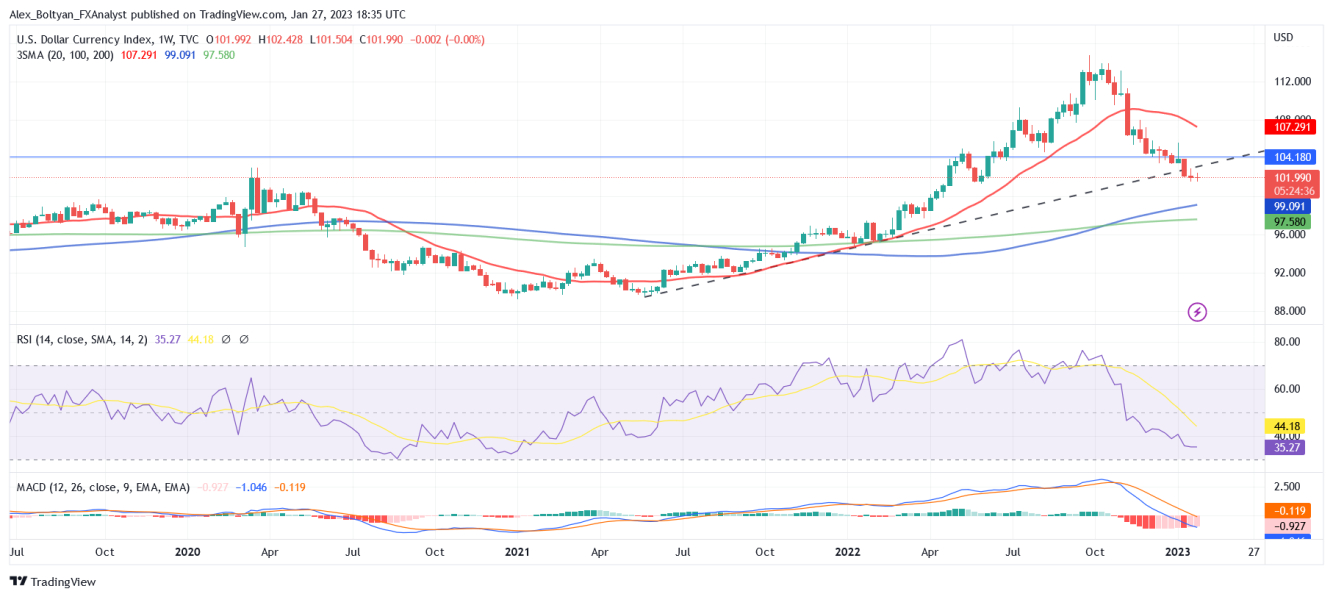The U.S. dollar, measured by the US Dollar Index, closed the week virtually unchanged despite Friday's gains.
At the time of writing, the DXY index trades at 101.98, 0.16% above its opening price, having retreated from a daily high of 102.19 following the release of Personal Consumption Expenditure (PCE) price index data.
The U.S. Bureau of Economic Analysis reported that the rate of inflation, as measured by the Personal Consumption Expenditures Price Index, decreased to 5% on an annual basis in December, compared to 5.5% in November. Additionally, the Core PCE Price Index, the Fed's preferred inflation gauge, dropped to 4.4% from 4.7% the previous month, meeting market expectations. On a monthly basis, both the Core PCE and PCE price indexes increased by 0.3% and 0.1%, respectively.
Other data suggested that the five-year University of Michigan inflation expectations declined to 2.9% while the Consumer Confidence index came in better than expected at 64.9.
As inflation has been on a steady decline, markets are anticipating less aggressive moves by the Federal Reserve, with two more 25-basis point interest rate hikes foreseen before the current tightening cycle comes to an end. Market price dynamics for the short term will be determined by Jerome Powell's forward guidance and the investor's assessments of when the Fed will pivot to rate cuts.
On Wednesday, the Fed will pronounce its verdict, while next Friday, the U.S. will release the nonfarm payrolls report. The European Central Bank and the Bank of England will also announce their decisions. 
From a technical standpoint, the DXY index still holds a bearish bias according to the weekly and daily charts. Weekly indicators remain deep in negative territory while the price is printing a Doji candle following two consecutive weekly declines, reflecting investors' indecision ahead of key macroeconomic events.
On the upside, the next resistance levels align at 102.20, followed by the 20-day SMA at 102.80, and the area at the 103.00 psychological mark. On the other hand, the immediate support level can be seen at the cycle low of 101.56, followed by the 101.00 and 100.50 areas.
